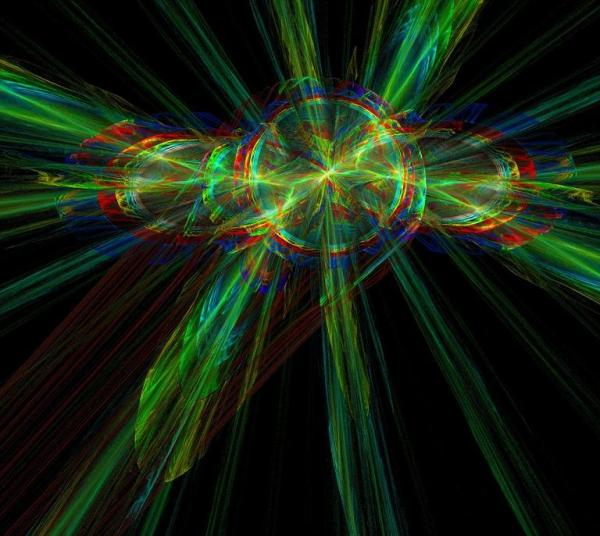BY LETTER
Chaos Wand
 Image from John B |
Colloquial term for a class of First Singularity and higher devices designed to influence chaotic systems and in effect "steer" them toward a desired meta-stable state.
The origins of chaotic technology itself date back to the Information Age, when researchers first developed the theory of chaotic systems; that is systems that while starting from deterministic initial conditions are so unstable as to be inherently unpredictable. Shortly thereafter several researchers determined that while a chaotic system might be unpredictable it was not entirely uncontrollable. By introducing a sequence of specific impulses into a chaotic system, the system could be 'steered' toward some desired state or set of states while retaining its overall chaotic nature.
With the advent of the first transingularity powers, chaos steering devices suddenly changed from interesting laboratory curiosities to a mature technology of lasting importance to humanity. Transapient devised software secretly manipulated stock markets toward results that their builders desired (although too many such attempts by too many parties had the effect of cancelling out the controlling influences of all concerned, returning the system to its 'natural' chaotic state), usually as part of some larger project of memetic alteration. Later, GAIA constructed chaotic devices were able to stabilize (although not directly manipulate) the climactic disruptions that human technology had wrought upon Earth's biosphere before the Great Expulsion (it is believed that these devices are the origin of the term "chaos wand" since they were generally wand-like in their overall appearance, although several tens of meters tall, and were widely deployed by GAIA in the early stages of eir reconstruction of the pre-human biosphere). Most present "Chaos Wands" however, vary widely in appearance and form. Some are pure software systems while other resemble distributed biomes or swarms of clarketech devices across a solar system.
In the modern era, chaotic technologies play a role in terraforming and habitat climate control systems as well as being used in transapient fusion reactor, fluidics, and particle accelerator systems (usually with the effect of increasing efficiency or reducing operating temperatures far beyond what equivalent modosophont systems are capable of achieving). They are also rumored to be in use in software form in the various stock and commodities markets of the more capitalistic polities (although officially such manipulation is highly illegal, with enforcement functions provided by local transapient law enforcement services). Finally, on the largest scale, chaotic technology plays a sometimes crucial role in stellar modification and stabilization operations across the Civilized Galaxy.
Over the millennia various modosophont researchers have attempted to duplicate the "magical" abilities of transapient chaotic technology. The results have occasionally been promising but have more often ranged from minor to catastrophic (often requiring the intervention of nearby transapients to avoid total disaster or to facilitate recovery) and in the current era many polities have actively banned all but the most mundane research in this area. Even those civilizations which continue to allow unfettered chaotic research require those involved to operate at a great remove (sometimes measured in light-years) from anything deemed important or even potentially at risk.
Related Articles
- Chaos and Chaos Theory - Text by M. Alan Kazlev
Irregular motion of a dynamic system that is impossible to predict in the long term. A defining quality of most complex (whether living or non-living) systems.
Chaos theory is the branch of mathematics, simulation, and applied cosmology that deals with chaos. - GAIA
- Limits of Transapient Power
- Weak Eigenspace Hunters
Appears in Topics
Development Notes
Text by Todd Drashner
Initially published on 07 January 2008.
Updated by Todd Drashner November 2023
References:
Chaos Theory -
Chaos - Making a New Science, James Gleick, Viking, New York (1987);
Steering Chaos -
"Controlling a Chaotic System", J. Singer, Y-Z Wang, and Haim H. Bau, Physical Review Letters 66, 1123 (1991);
"Taming Chaos with Weak Periodic Perturbations", Y. Braiman and I. Goldhirsch, Physical Review Letters 66, 2545 (1991).
Harnessing the Butterfly — The Steering of Chaos: J. Cramer, The Alternate View #51, Analog Science Fiction/Science Fact (1991)
Image by John B Original location here
Initially published on 07 January 2008.
Updated by Todd Drashner November 2023
References:
Chaos Theory -
Chaos - Making a New Science, James Gleick, Viking, New York (1987);
Steering Chaos -
"Controlling a Chaotic System", J. Singer, Y-Z Wang, and Haim H. Bau, Physical Review Letters 66, 1123 (1991);
"Taming Chaos with Weak Periodic Perturbations", Y. Braiman and I. Goldhirsch, Physical Review Letters 66, 2545 (1991).
Harnessing the Butterfly — The Steering of Chaos: J. Cramer, The Alternate View #51, Analog Science Fiction/Science Fact (1991)
Image by John B Original location here






